Информация, относящаяся к Элеазару Сукенику (Sukenik), взята из его книги на иврите, вышедшей после его смерти и озаглавленной The Collection of the Hidden Scrolls in the Possession of the Hebrew University (ed. Nahman Avigad; Jerusalem: Bialik Institute, 1954), p. 14 (его объяснение своего пресс-релиза) и р. 26 (его предположение, что авторами свитков были ессеи). Он очень интересно рассказывает о том, как узнал о свитках, и в конце концов приобрел некоторые из них.
Утверждения Антона Кираза о праве собственности на свитки см. в G. A. Kiraz, ed., Anton Kiraz’s Dead Sea Scrolls Archive (Piscat-away, NJ: Gorgias, 2005)
При датировке ключевых событий в истории открытия и изучения свитков использован перечень, подготовленный Стивеном Дж. Пфанном и опубликованный в The Dead Sea Scrolls on Microfiche: Companion Volume (ed. Emanuel Tov, with the collaboration of
S. J. Pfann; Leiden/New York/Cologne: E. J. Brill, 1993), 97-108. В этом же труде имеется раздел, составленный Пфанном и озаглавленный «Sites in the Judean Desert Where Texts Have Been Found», 109-19.
Цитата Миллара Барроуза (Burrows) взята из его The Dead Sea Scrolls (New York: Viking Press, 1955), 17.
Ранний классический труд по археологии Кумрана и книга, которую я цитирую в этой главе, — это Roland de Vaux, Archaeology of the Dead Sea Scrolls (Scweich Lectures 1959; rev. ed.; London: Oxford
University Press, 1973). Другое полезное издание: Philip R. Davies, Qumran (Cities of the Biblical World; Grand Rapids: Wm. B. Eerdmans, 1983). Ha c. 30 автор упоминает тех, кто посещал комплекс до 1947 г. По этому вопросу см. также Пфанна в The Dead Sea Scrolls on Microfiche, 110. Наиболее полное изложение Магнесс ее интерпретации свидетельств см. в J. Magness, The Archaeology of Qumran and the Dead Sea Scrolls (Studies in the Dead Sea Scrolls and Related Literature; Grand Rapids: Wm. B. Eerdmans, 2002).
Точку зрения Магена Броши (Broshi) на постулированный де Во перерыв в заселении Кумрана в 31-4 гг. до н. э. и родственные вопросы см. в его очерке «The Archaeology of Qumran — Reconsideration» в The Dead Sea Scrolls: Forty Years of Research (ed. Devorah Dimant; Studies on the Texts of the Desert of Judah 10; Leiden: Brill, 1992), 103-15.
Взгляды Нормана Голба (Golb) см., например, в его очерках «The Problem of Origin and Identification of the Dead Sea Scrolls», Proceedings of the American Philosophical Society 124 (1980), 1-24; «The Dead Sea Scrolls: A New Perspective», The American Scholar 58 (1989), 177–207, и в его книге Who Wrote the Dead Sea Scrolls?: The Search for the Secret of Qumran (New York: Scribner, 1995).
Статья Паулины Донсель-Вут (Dоnceel-Voute): «“Coenaculum” — La salle a l’etage du locus 30 a Khirbet Qumran sur la mer morte», Banquets d’Orient (Res Orientales 4; 1993), 61–84.
Позицию И. Хиршфельда (Hirschfeld) см. в его Qumran in Context: Reassessing the Archaeological Evidence (Peabody, MA: Hendrickson, 2004).
Взгляд Ж.-Б. Гумбера (Humbert) на кумранский комплекс см. в «Lespace sacre a Qumran: Proposition pour Parcheology», Revue Biblique 101 (1994), 161–214; и «Some Remarks on the Archaeology of Qumran» в Qumran: The Site of the Dead Sea Scrolls: Archaeological Interpretations and Debates.
Очерк Иосифа Зиаса (Zias): «The Cemeteries of Qumran and Celibacy: Confusion Laid to Rest?» Dead Sea Discoveries 7 (2000), 220-53.
Сообщения об исследовании костей из кумранских могил см. например, в Qumran: The Site of the Dead Sea Scrolls: Archaeological Interpretations and Debates: Proceedings of a Conference Held at Brown University, November 17–19, 2002 (ed. K. Galor, J.-B. Humbert, and J. Zanderberg; Studies on the Texts of the Desert of Judah 57; Leiden: Brill, 2006). Очерк О. Рорера-Эртля (Rohrer-Ertl) «Facts and Results Based on Skeletal Remains from Qumran Found in the
Collectio Kurth — A Study in Methodology» помещен на с. 181–93; за ним на с. 195–212 следует очерк С. Шеридан и Дж. Уллинджер (Sheridan & Ullinger) «А Reconsideration of the Human Remains in the French Collection from Qumran». Статья Брайана Шульца (Shultz): «The Qumran Cemetery: 150 Years of Research», Dead Sea Discoveries 13 (2006), 194–228.
Проект публикации всех результатов раскопок де Во привел к появлению следующих работ: J.-B. Humbert & A. Chambon, Fouilles de Khirbet Qumran et de Ain Feshkha I: Album de photographies, Repertoire du fonds photographique, Synthese des notes de chantier du Pere Roland de Vaux OP (Novum Testamentum et Orbis Antiquus Series Archaeologica 1; Fribourg: Editions Universitaries/Gottingen: Vandenhoeck & Ruprecht, 1994); J.-B. Humbert & A. Chambon, The Excavation of Khirbet Qumran and Ain Feshka IB: Synthesis of Roland de Vaux’s Field Notes (translated and revised by S. Pfann; Novum Testamentum et Orbis Antiquus Series Archaeologica 1; Fribourg: Editions Universitaries/Gottingen: Vandenhoeck & Ruprecht, 2003; этот выпуск является английским переводом предыдущего с добавлением некоторого нового материала); J.-В. Humbert & J. Gunneweg, Fouilles de Khirbet Qumran et de Ain Feshka II: Etudes d’anthropologie, de physique et de chimie (Novum Testamentum et Orbis Antiquus Series Archaeologica 1; Fribourg: Editions Universitaries/Gottingen: Vandenhoeck & Ruprecht, 2003).
Очерк Фрэнка Мура Кросса (Cross) о кумранском письме: «The Development of the Jewish Scripts» в The Bible and the Ancient Near East: Essays in Honour of William Foxwell Albright (ed. G. E. Wright; Garden City, N. Y: Doubleday, 1961), 133–202.
Информация о AMS-тестировании взята из G. Bonani, S. Ivy, W. Wolfli, M. Broshi, I. Carmi & J. Strugnell, «Radio Carbon Dating of Fourteen Dead Sea Scrolls», Radiocarbon 34 (1992), 843-49 (о тестах в Цюрихе). О тестах в Тусоне см. A. J. Т. Juli, D. J. Donahue, M. Broshi & E. Tov, «Radiocarbon Dating of Scrolls and Linen Fragments fron the Judean Desert» Atiqot 28 (1996), 85–91. Цифры по обоим тестам были затем представлены согласно калибровочным данным 1997 г. в D. Doudna, «Dating the Scrolls on the Basis of Radiocarbon Analysis», The Dead Sea Scrolls After Fifty Years: A Comprehensive Assessment (2 vols., ed. P Flint & J. VanderKam; Leiden: Brill, 1998,1999), 1430-71. Выше были приведены цифры Д. Дудны.
Читать дальше
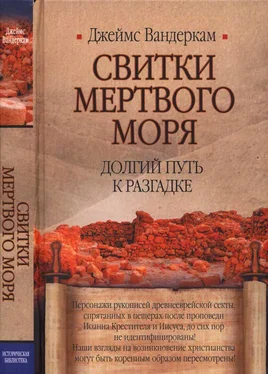

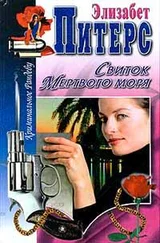
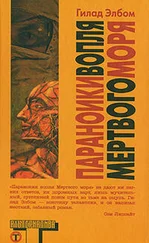
![Миньона Яновская - Очень долгий путь [Из истории хирургии]](/books/28917/minona-yanovskaya-ochen-dolgij-put-iz-istorii-hir-thumb.webp)

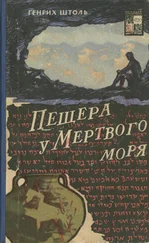
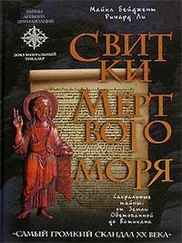
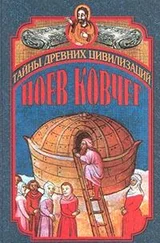
![Пол Андерсон - Долгая дорога домой [Долгий путь домой, У них нет мира]](/books/340873/pol-anderson-dolgaya-doroga-domoj-dolgij-put-domo-thumb.webp)
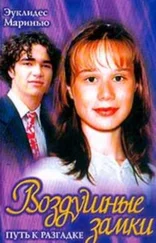
![Аделия Розенблюм - Инспектор Ян. Долгий путь [litres самиздат]](/books/436857/adeliya-rozenblyum-inspektor-yan-dolgij-put-litres-thumb.webp)